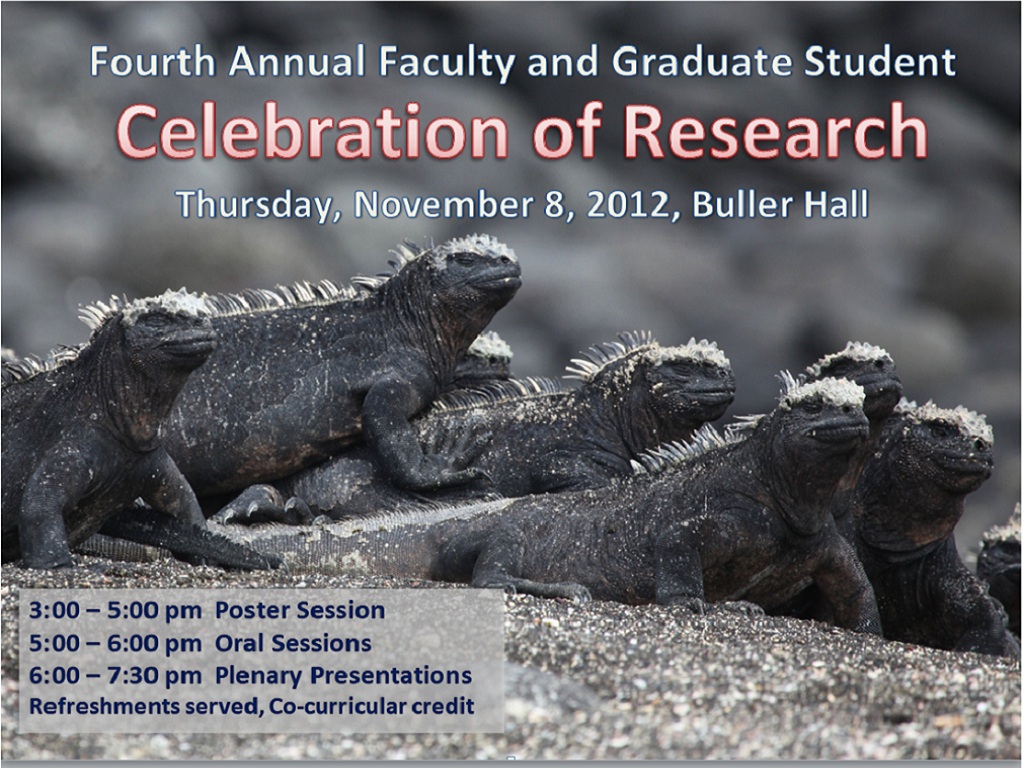Presentation Title
P-27 Egg-laying behavior in Glaucous-winged Gulls
Presenter Status
Department of Biology
Second Presenter Status
MS Student, Department of Biology
Third Presenter Status
Undergraduate Student, Department of Biology
Fourth Presenter Status
Undergraduate Student, Department of Biology
Fifth Presenter Status
Department of Mathematics
Sixth Presenter Status
Department of Biology
Location
Buller Hallway
Start Date
8-11-2012 3:00 PM
End Date
8-11-2012 5:00 PM
Presentation Abstract
Various aspects of reproductive biology of Glaucous-winged gulls have been evaluated. Egg laying behavior has not yet been documented. We modified digital spy-cameras to monitor nests continuously during daylight hours. During labor, females stood or crouched over their nest for an average of 4.8 minutes. An average of 27 visible contractions occurred with maximum rates of 15.3 contractions/min during hard labor. During labor the wings were slightly spread and the abdomen was held close to the ground in a crouched position. After laying, females stood over the nest for an average of 8.9 min, which was followed by turning the egg and sitting on the egg. Three of the females vocalized during labor. This consisted of very short single or doublets of syllables having a fundamental frequency 900 kHz. Two females gathered small amounts of nest material and placed it on their backs while sitting on their nests prior to labor, and one did so while incubating after laying. While eggs were laid throughout the day and night, more eggs were laid between 0500-0800hr. The loss of eggs (mostly cannibalized) also varied significantly with most eggs lost in the early morning or later in the afternoon.
P-27 Egg-laying behavior in Glaucous-winged Gulls
Buller Hallway
Various aspects of reproductive biology of Glaucous-winged gulls have been evaluated. Egg laying behavior has not yet been documented. We modified digital spy-cameras to monitor nests continuously during daylight hours. During labor, females stood or crouched over their nest for an average of 4.8 minutes. An average of 27 visible contractions occurred with maximum rates of 15.3 contractions/min during hard labor. During labor the wings were slightly spread and the abdomen was held close to the ground in a crouched position. After laying, females stood over the nest for an average of 8.9 min, which was followed by turning the egg and sitting on the egg. Three of the females vocalized during labor. This consisted of very short single or doublets of syllables having a fundamental frequency 900 kHz. Two females gathered small amounts of nest material and placed it on their backs while sitting on their nests prior to labor, and one did so while incubating after laying. While eggs were laid throughout the day and night, more eggs were laid between 0500-0800hr. The loss of eggs (mostly cannibalized) also varied significantly with most eggs lost in the early morning or later in the afternoon.



